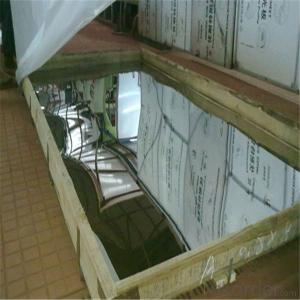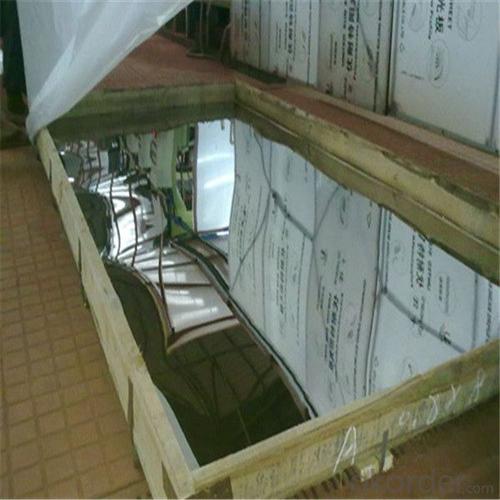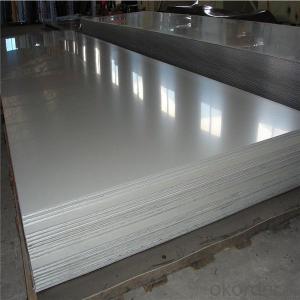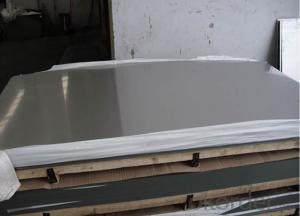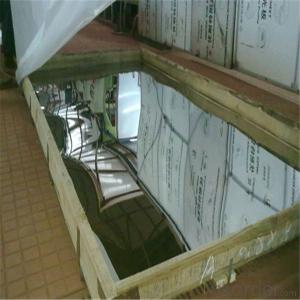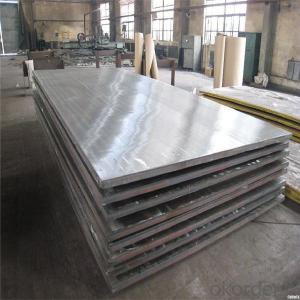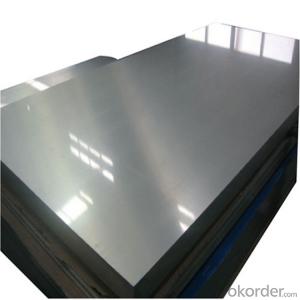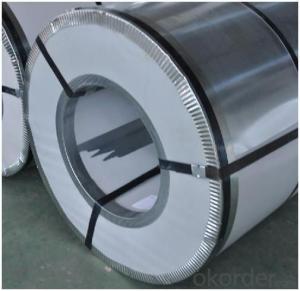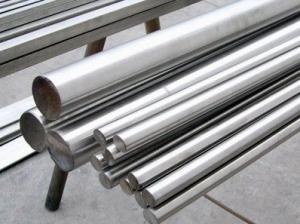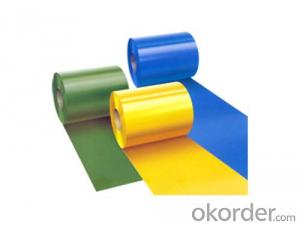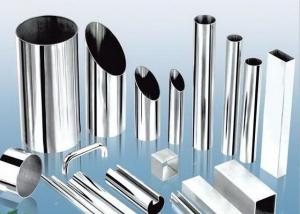Stainless Steel Sheet grade 304 TISCO,LISCO,BAO STEEL
- Loading Port:
- Shanghai
- Payment Terms:
- TT OR LC
- Min Order Qty:
- 2 m.t.
- Supply Capability:
- 1000 m.t./month
OKorder Service Pledge
OKorder Financial Service
You Might Also Like
Specification
Description of stainless steel sheet grade 304
| Grade | 201,202,304,304L,309, 309S,310S,316,316L,316Ti,317L,321,347H,409,409L, |
| 410, 410S, 420(420J1, 420J2), 430, 436, 439, 441, 444, 446 etc. | |
| Brand | TISCO, BAOSTEEL, POSCO, JISCO, LISCO etc. |
| Certification | ISO, SGS, BV, CE or as required |
| Thickness | 0.3mm-60mm |
| Width | 1000mm,1219mm(4feet),1250mm,1500mm,1524mm(5feet), |
| 1800mm,2000mm or as your requirements | |
| Length | 2000mm,2440mm(8feet),2500mm,3000mm,3048mm(10feet), |
| 5800mm, 6000mm or as your requirements | |
| Surface | Common: 2B, 2D, HL(Hairline), BA(Bright annealed), No.4 |
| Colored: Gold mirror, Sapphire mirror, Rose mirror, black mirror, bronze mirror; | |
| Gold brushed, Sapphire brushed, Rose brushed, black brushed etc. | |
| Standard | ASTM,AISI,SUS,JIS,EN,DIN,BS,GB,etc |
| Delivery time | 3 days after confirming the order |
| MOQ | 1 ton |
| Package | Water proof paper+metal pallet+Angle bar protection+steel belt or as requirements. |
| The inner size of container is below: | |
| 20ft GP: 5.8m(length) x 2.13m(width) x 2.18m(high) about 24-26CBM,23MTS | |
| 40ft GP: 11.8m(length) x 2.13m(width) x 2.18m(high) about 54CBM,27MTS | |
| 40ft HG: 11.8m(length) x 2.13m(width) x 2.72m(high) about 68CBM,27MTS | |
| Payment term | L/C at sight or 30% TT as deposit and the balance paid against copy of B/L |
| Applications | Architectural decoration, luxury doors, elevators decorating, metal tank shell, ship building, |
| decorated inside the train, as well as outdoor works, advertising nameplate, the ceiling and | |
| cabinets, aisle panels, screen, the tunnel project, hotels, guest houses, entertainment place, | |
| kitchen equipment, light industrial and others. | |
| Advantages | Showing the splendor of your quality, wear-resistant as well, strong corrosion resistance and decorative effect, durable and beautiful in good taste. |
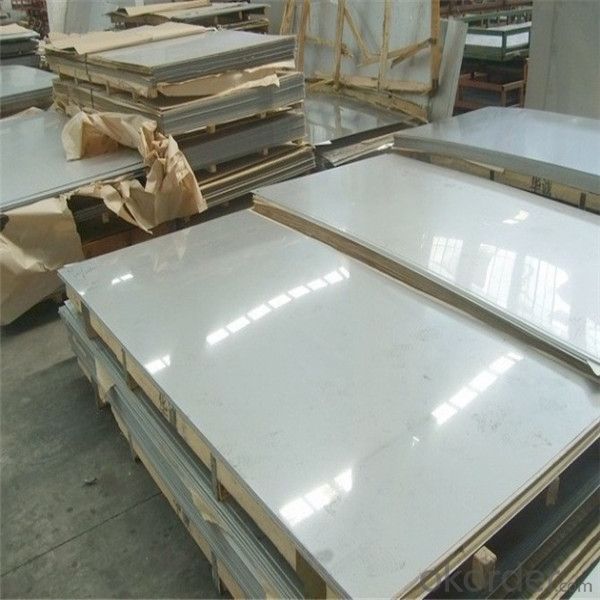
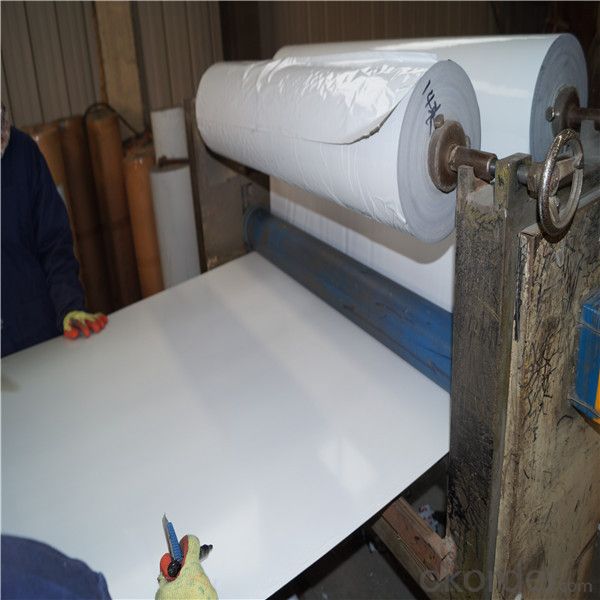
3. Applications
Stainless steel’s resistance to corrosion and staining, low maintenance and familiar lustre make it an ideal material for many applications. There are over 150 grades of stainless steel, of which fifteen are most commonly used. The alloy is milled into coils, sheets, plates, bars, wire, and tubing to be used in cookware, cutlery, household hardware, surgical instruments, major appliances, industrial equipment (for example, in sugar refineries) and as an automotive and aerospace structural alloy and construction material in large buildings. Storage tanks and tankers used to transport orange juice and other food are often made of stainless steel, because of its corrosion resistance and antibacterial properties. This also influences its use in commercial kitchens and food processing plants, as it can be steam-cleaned and sterilized and does not need paint or other surface finishes.
- Q: What is the coefficient of expansion of stainless steel sheets?
- The coefficient of expansion of stainless steel sheets typically ranges from 10.5 to 17.3 x 10^-6 per degree Celsius.
- Q: Are stainless steel sheets resistant to organic acids?
- Yes, stainless steel sheets are generally resistant to organic acids. Stainless steel is known for its corrosion resistance, and this property extends to its ability to withstand the effects of organic acids. However, the level of resistance can vary depending on the specific composition of the stainless steel and the concentration and type of organic acid being used. In some cases, certain organic acids may cause localized corrosion or pitting on the surface of stainless steel, but overall, stainless steel is considered a suitable material for handling organic acids in various industries such as chemical processing, pharmaceuticals, and food production. It is always recommended to consult with experts or refer to specific stainless steel grades and their compatibility with different organic acids to ensure optimal resistance.
- Q: Can stainless steel sheets be used in high-temperature environments?
- Stainless steel sheets are capable of being utilized in high-temperature environments. The heat resistance properties of stainless steel are well-known, rendering it suitable for various applications in such environments. The maximum operating temperature of stainless steel and its composition are determined by the specific grade used. Austenitic stainless steels, such as grades 304 and 316, possess the ability to endure temperatures up to 1600°F (870°C) without compromising their mechanical strength or corrosion resistance. In contrast, higher alloyed stainless steels like grades 309 and 310 are specifically engineered to handle higher temperatures, reaching approximately 2100°F (1150°C). These stainless steel sheets find common use in industries such as power generation, chemical processing, furnace manufacturing, and aerospace, where exposure to extreme heat is necessary.
- Q: Are stainless steel sheets suitable for outdoor signage?
- Stainless steel sheets are indeed appropriate for outdoor signage. This material is widely favored for outdoor uses because of its robustness, ability to resist corrosion, and pleasing appearance. It possesses exceptional resistance to rust and can endure harsh weather conditions, making it particularly suitable for outdoor signage that will be exposed to rain, sunlight, and extreme temperatures. Moreover, stainless steel sheets can be easily personalized and fabricated to craft diverse designs and forms, rendering them a versatile choice for outdoor signage. Furthermore, its sleek and polished finish adds a professional and contemporary touch to any signage. In summary, stainless steel sheets are a dependable and enduring alternative for outdoor signage.
- Q: Are stainless steel sheets suitable for architectural column covers or cladding?
- Yes, stainless steel sheets are suitable for architectural column covers or cladding. Stainless steel is known for its durability, corrosion resistance, and aesthetic appeal, making it an excellent choice for exterior applications. It can withstand harsh weather conditions, maintain its appearance over time, and provide a sleek and modern look to architectural structures. Additionally, stainless steel sheets offer versatility in terms of finishes, patterns, and colors, allowing architects and designers to create unique and visually appealing column covers or cladding designs.
- Q: Can stainless steel sheets be etched with designs?
- Indeed, designs can certainly be etched onto stainless steel sheets. Stainless steel, being a flexible material, offers the option of etching through different techniques like chemical etching or laser engraving. Chemical etching involves the application of a corrosive substance onto the stainless steel surface. This substance selectively eliminates the unprotected areas, leaving the desired design etched onto the sheet. On the other hand, laser engraving employs a high-powered laser beam to etch the design onto the stainless steel surface. Both methods yield intricate and detailed designs on stainless steel sheets, making it highly sought after for decorative and functional purposes in numerous industries.
- Q: What are the different types of edge finishes available for stainless steel sheets?
- There are several different types of edge finishes available for stainless steel sheets. These finishes are applied to the edges of the sheets to provide a clean and polished appearance, as well as to protect against sharp edges and potential corrosion. 1. Mill Finish: This is the standard edge finish for stainless steel sheets. It is the raw, untreated edge that is produced during the manufacturing process. While it may have a slightly rough or uneven appearance, it is still functional and commonly used for industrial applications. 2. Deburred Edges: In order to remove any sharp or jagged edges, the stainless steel sheet can be deburred. This is done by grinding or sanding down the edges to create a smoother and safer finish. Deburred edges are commonly used in applications where safety is a concern, such as in food processing or medical equipment. 3. Rounded Edges: Rounded edges are created by using a rounding tool to smooth out the sharp corners of the stainless steel sheet. This type of edge finish not only enhances the aesthetics of the sheet, but also reduces the risk of injury from sharp edges. Rounded edges are often preferred for architectural or decorative applications. 4. Beveled Edges: Beveled edges are achieved by cutting or grinding the edge of the stainless steel sheet at a specific angle, typically 45 degrees. This creates a chamfered edge that adds a sleek and modern look to the sheet. Beveled edges are commonly used in applications where aesthetics and design are important, such as in furniture or interior design. 5. Polished Edges: Polished edges involve buffing or polishing the edge of the stainless steel sheet to create a smooth and mirror-like finish. This type of edge finish adds a touch of elegance and sophistication to the sheet, making it suitable for high-end architectural or decorative applications. In summary, the different types of edge finishes available for stainless steel sheets include mill finish, deburred edges, rounded edges, beveled edges, and polished edges. Each finish offers its own unique benefits and is chosen based on the specific requirements of the application.
- Q: What kind of screws do you choose for stainless steel plates?
- Because boards are often used for decoration, the best choice is not to be fixed with screwsJust use good glue, OKIf the plate is for other purposes, if the demand is not high, ordinary will do
- Q: Can stainless steel sheets be used for elevator cladding?
- Yes, stainless steel sheets can be used for elevator cladding. Stainless steel is a popular material choice for elevator cladding due to its durability, resistance to corrosion, and aesthetic appeal. It provides a sleek and modern look to elevators, making it a preferred option for many architects and designers. Stainless steel sheets are available in various finishes, such as brushed, mirrored, or patterned, allowing for customization and flexibility in design. Additionally, stainless steel is easy to clean and maintain, making it a practical choice for high-traffic areas like elevators. Overall, stainless steel sheets offer a durable and visually appealing solution for elevator cladding.
- Q: Are stainless steel sheets suitable for outdoor sculptures or artwork?
- Yes, stainless steel sheets are highly suitable for outdoor sculptures or artwork. Stainless steel is known for its exceptional durability, corrosion resistance, and weather resistance, making it a perfect choice for outdoor installations. It can withstand harsh environmental conditions such as rain, snow, UV rays, and temperature fluctuations without losing its structural integrity or aesthetic appeal. Moreover, stainless steel can be easily shaped, cut, and welded, offering great flexibility for artists and designers to create intricate and complex sculptures. Additionally, stainless steel has a sleek and modern appearance, which can add a contemporary touch to any outdoor setting. Its low maintenance requirements and ability to retain its original finish for an extended period make it a cost-effective choice for outdoor sculptures or artwork. Therefore, stainless steel sheets are an excellent material option for creating long-lasting and visually appealing outdoor artworks.
Send your message to us
Stainless Steel Sheet grade 304 TISCO,LISCO,BAO STEEL
- Loading Port:
- Shanghai
- Payment Terms:
- TT OR LC
- Min Order Qty:
- 2 m.t.
- Supply Capability:
- 1000 m.t./month
OKorder Service Pledge
OKorder Financial Service
Similar products
Hot products
Hot Searches
Related keywords
